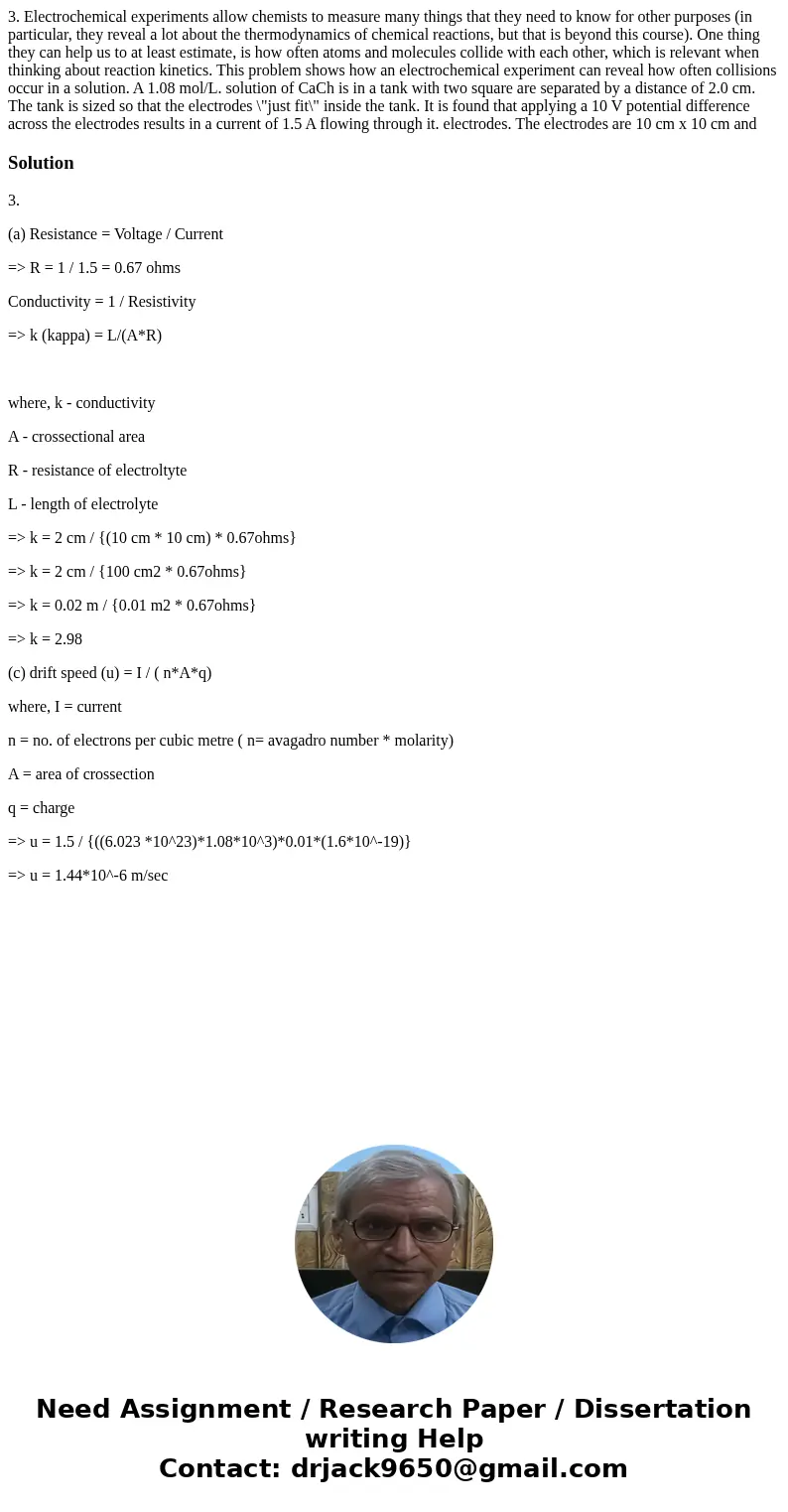3 Electrochemical experiments allow chemists to measure many
3. Electrochemical experiments allow chemists to measure many things that they need to know for other purposes (in particular, they reveal a lot about the thermodynamics of chemical reactions, but that is beyond this course). One thing they can help us to at least estimate, is how often atoms and molecules collide with each other, which is relevant when thinking about reaction kinetics. This problem shows how an electrochemical experiment can reveal how often collisions occur in a solution. A 1.08 mol/L. solution of CaCh is in a tank with two square are separated by a distance of 2.0 cm. The tank is sized so that the electrodes \"just fit\" inside the tank. It is found that applying a 10 V potential difference across the electrodes results in a current of 1.5 A flowing through it. electrodes. The electrodes are 10 cm x 10 cm and 
Solution
3.
(a) Resistance = Voltage / Current
=> R = 1 / 1.5 = 0.67 ohms
Conductivity = 1 / Resistivity
=> k (kappa) = L/(A*R)
where, k - conductivity
A - crossectional area
R - resistance of electroltyte
L - length of electrolyte
=> k = 2 cm / {(10 cm * 10 cm) * 0.67ohms}
=> k = 2 cm / {100 cm2 * 0.67ohms}
=> k = 0.02 m / {0.01 m2 * 0.67ohms}
=> k = 2.98
(c) drift speed (u) = I / ( n*A*q)
where, I = current
n = no. of electrons per cubic metre ( n= avagadro number * molarity)
A = area of crossection
q = charge
=> u = 1.5 / {((6.023 *10^23)*1.08*10^3)*0.01*(1.6*10^-19)}
=> u = 1.44*10^-6 m/sec

 Homework Sourse
Homework Sourse